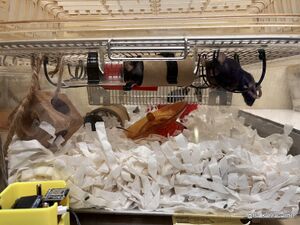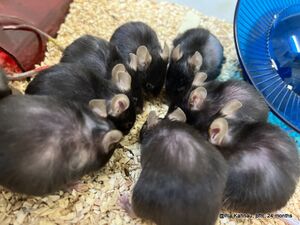Difference between revisions of "Geriatric mice"
| (2 intermediate revisions by the same user not shown) | |||
| Line 2: | Line 2: | ||
A nuanced evaluation of age-related phenotypes without mistaking them for pain, suffering, or harm poses a challenge for all involved personnel and requires both training and experience. It is essential to define when aging begins, what phenotypic traits an aging or elderly mouse exhibits, and how aging mice should be housed, cared for, and treated. To assist with this, image and video resources illustrating the phenotypic differences between young and old mice are provided at Norecopa's Refinement Wiki. Additionally, a care sheet for geriatric mice will be referenced once it is published (the care sheet will be submitted for publication in December 2024). | A nuanced evaluation of age-related phenotypes without mistaking them for pain, suffering, or harm poses a challenge for all involved personnel and requires both training and experience. It is essential to define when aging begins, what phenotypic traits an aging or elderly mouse exhibits, and how aging mice should be housed, cared for, and treated. To assist with this, image and video resources illustrating the phenotypic differences between young and old mice are provided at Norecopa's Refinement Wiki. Additionally, a care sheet for geriatric mice will be referenced once it is published (the care sheet will be submitted for publication in December 2024). | ||
| + | |||
| + | [[File:Geriatric mice housing1.jpeg|thumb|Example for environmental enrichment provided to geriatric mice]] | ||
| + | [[File:Geriatric mice housing3.jpeg|thumb|Example for environmental enrichment provided to geriatric mice.]] | ||
| + | |||
| + | |||
| + | [[File:Geriatric mice housing2.jpeg|thumb|Example for environmental enrichment provided to geriatric mice.]] | ||
| + | [[File:Mice 15months.jpeg|thumb|Female C57BL/6J mice at 15 months of age were housed in groups of 12 animals. In addition to age-related changes in the fur, symptoms of barbering were also observed.]] | ||
| + | [[File:Mice 24months2.jpeg|thumb|Female C57BL/6J mice at 15 months of age were housed in groups of 12 animals. In addition to age-related changes in the fur, symptoms of barbering were also observed.]] | ||
| + | [[File:Mice 24months.jpeg|thumb|Female C57BL/6J mice at 15 months of age were housed in groups of 12 animals. In addition to age-related changes in the fur, symptoms of barbering were also observed.]] | ||
| + | [[File:Mouse 15months.jpg|thumb|Female C57BL/6J mouse at the age of 15 months.]] | ||
Latest revision as of 12:58, 26 November 2024
In recent years, laboratory mice have increasingly been kept in research facilities for extended periods, allowing them to reach advanced ages. As the phenotype of mice changes with age, adjustments in evaluation criteria during daily inspections are necessary to accurately detect and assess age-related conditions. The criteria typically applied to younger animals tend to overestimate age-related abnormalities, often resulting in the erroneous culling of healthy mice solely based on their age.
A nuanced evaluation of age-related phenotypes without mistaking them for pain, suffering, or harm poses a challenge for all involved personnel and requires both training and experience. It is essential to define when aging begins, what phenotypic traits an aging or elderly mouse exhibits, and how aging mice should be housed, cared for, and treated. To assist with this, image and video resources illustrating the phenotypic differences between young and old mice are provided at Norecopa's Refinement Wiki. Additionally, a care sheet for geriatric mice will be referenced once it is published (the care sheet will be submitted for publication in December 2024).
Videos will be uploaded soon.






